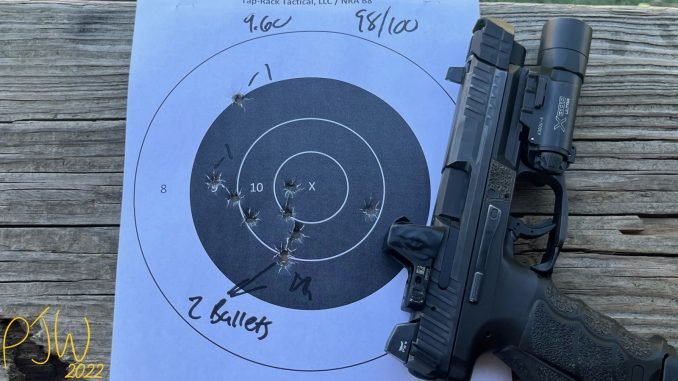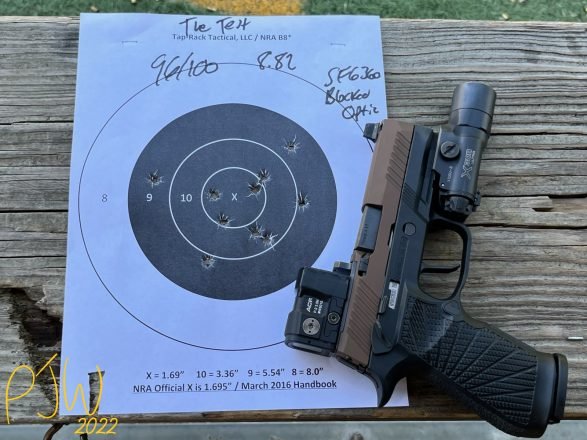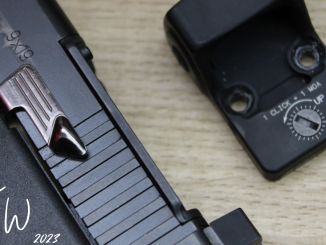
Glyn Bindon was the founder of Trijicon, and coined the term of the “Bindon Aiming Concept (BAC)“. Glyn created the term as an application of how to shoot magnified optics with illuminated reticles, while keeping both of your eyes open. However, the BAC can be used on any optic that is illuminated, magnified or not. I’m a firm believer in knowing how the sausage is made, so can knowing how the BAC functions help you to shoot better?
What is the Bindon Aiming Concept?
As humans, we (generally) have two eyes mounted on our faces, facing the same directions. With this, we have binocular vision. Basically, your brain pieces together what each of your eyes see, and combines the images together, to make vision easier. Your brain will duplicate some of the things that one eye sees, and overlay it on the other eye. Your brain will also cut out some stuff to make your vision better, like not noticing your nose in your vision (you are noticing it now, sorry).
Glyn Bindon found that when looking through an optic with one eye, the shooter lacked situational awareness. However, with both eyes open, the eye behind the optic would superimpose the reticle over the other eye. Illuminated reticles worked the best, as it provided better contrast than just a standard reticle. Glyn also saw that with the magnification, your brain would also apply that to the non-optic eye. With this, the BAC was born.

Glyn worked as the US vendor for Armson, the company that made the Occluded Eye Gunsight. Those optics work on the same principle as the BAC, as they are just a glowing dot in a blacked out tube. With that knowledge, it’s no surprise to see how Bindon came to the BAC.
Technically, the BAC only applies to magnified optics, however, holds the same use in unmagnified optics. How can we use this to shoot better?
Using the Bindon Aiming Concept With Red Dots

When using a red dot, you should have both of your eyes open. Aside from better situational awareness, you’ll have proper target focus, and you’ll be able to track the dot better under recoil. Another benefit to using the BAC with your red dot, is that you can still aim while the front of the optic is blocked.
While not a common issue, a lot of people worry about their optic being obstructed while handgun shooting. As long as you can still see through the rear of the optic, you can certainly still aim. The BAC makes it that mud, dust, or fouling will not prevent you from shooting accurately. Obviously you want to clear the obstruction on the optic, but it won’t hold you back too much.
I shot a few Tests with my optics blocked, and my scores and time were not really all that different. Really makes you think!
The Verdict on the Bindon Aiming Concept
Now that we know how the BAC works, how can we better use that knowledge to hone our craft. I’ve personally found that explaining the BAC to new shooters has helped them with shooting with both eyes open, and that with experienced shooters, they get faster and more accurate. While you don’t have to know the science behind the BAC to use it, I still find it helpful to know.
Now that you have seen how the sausage is made, do you still try it? I think so.
Here’s a link to a playlist of all of the my Tests from my day of occluded eye shooting:





Be the first to comment